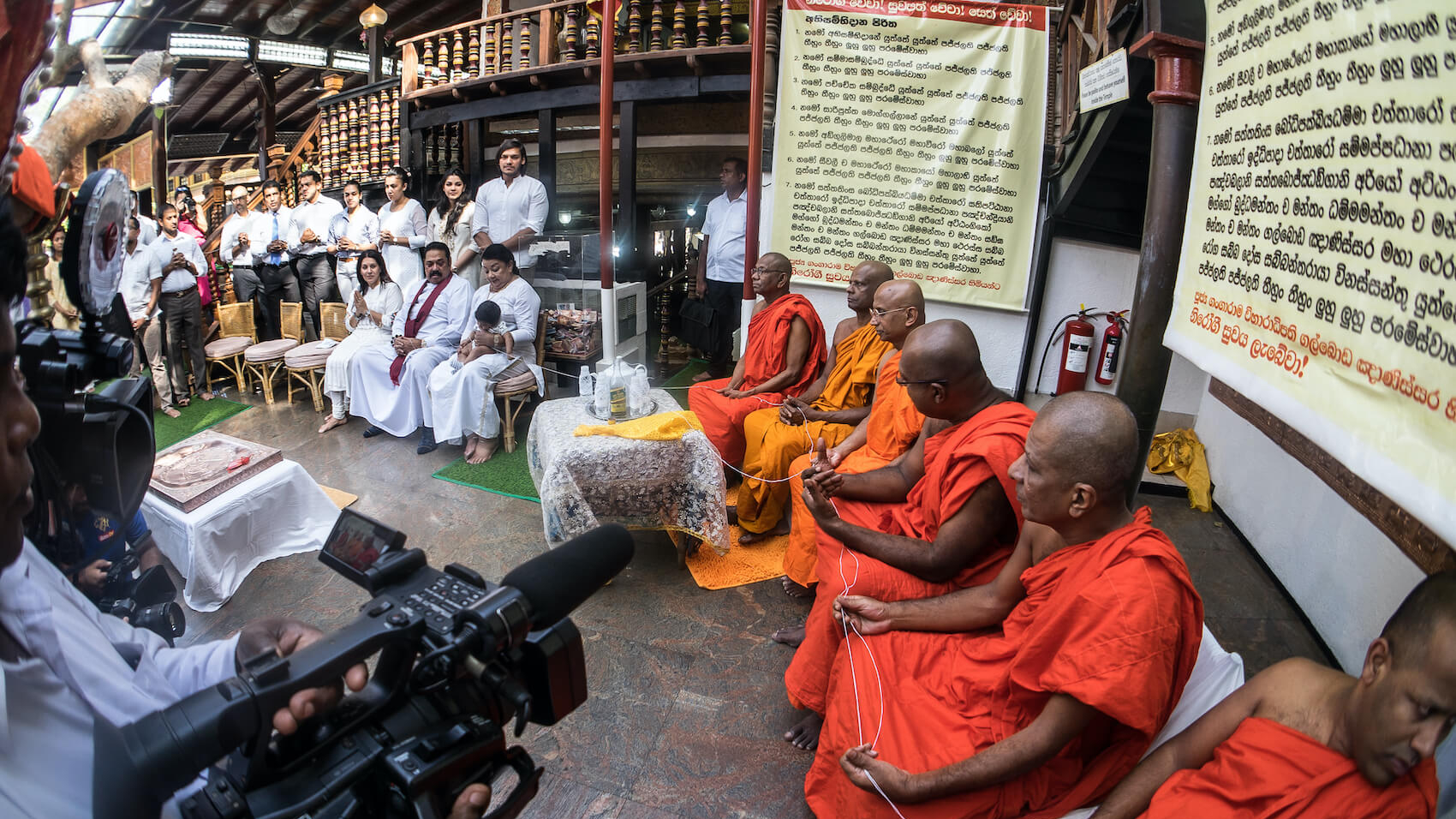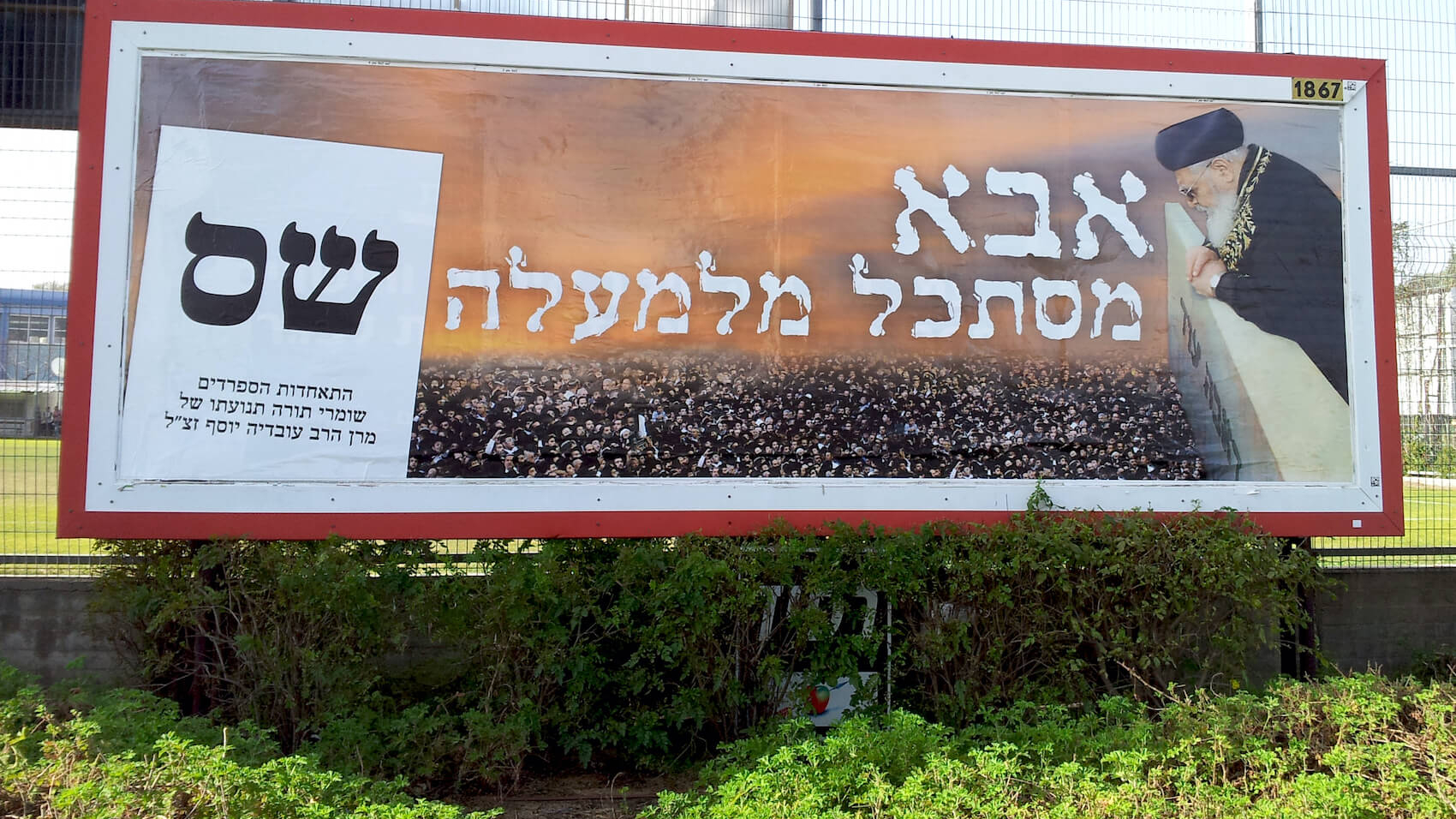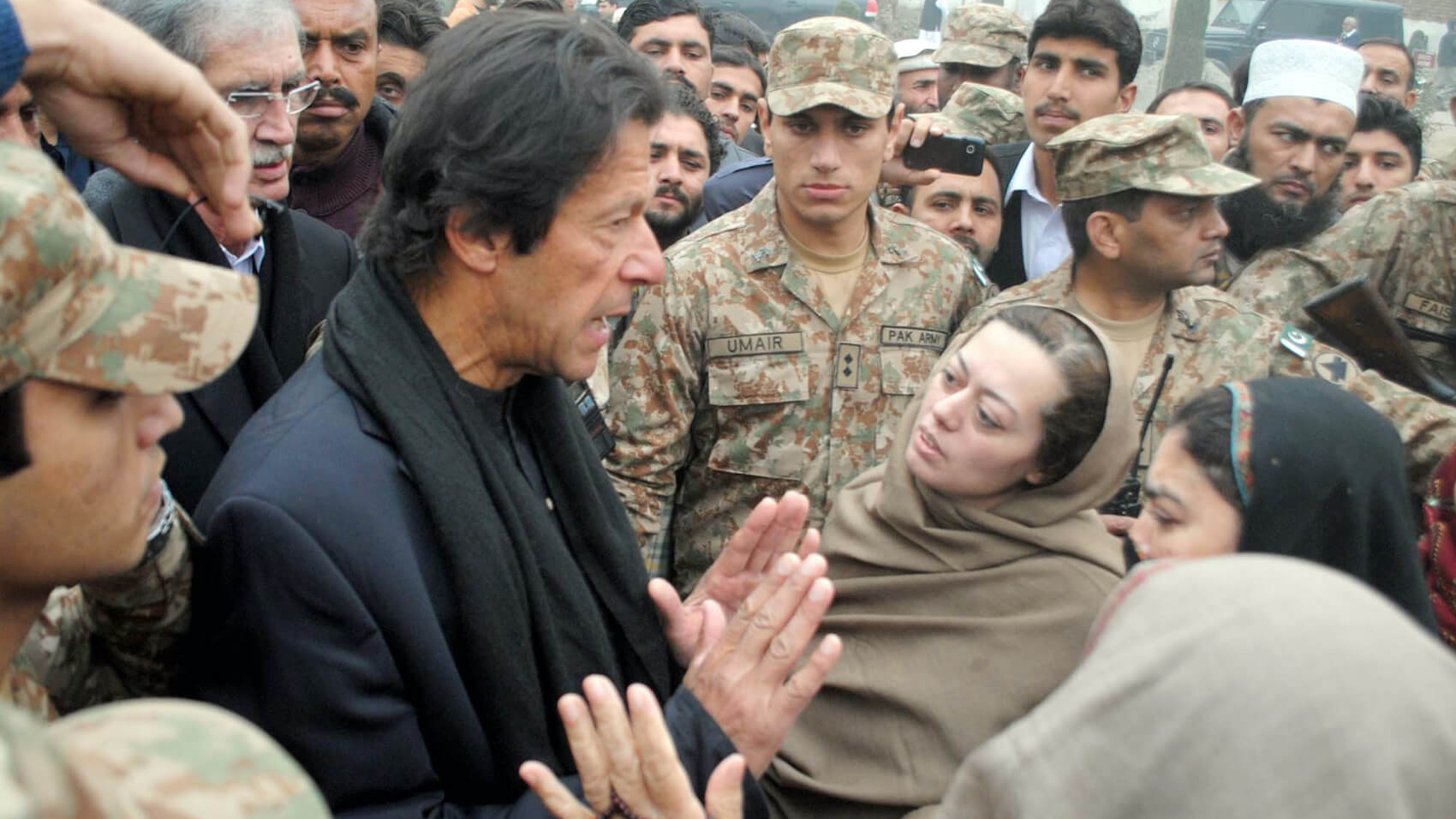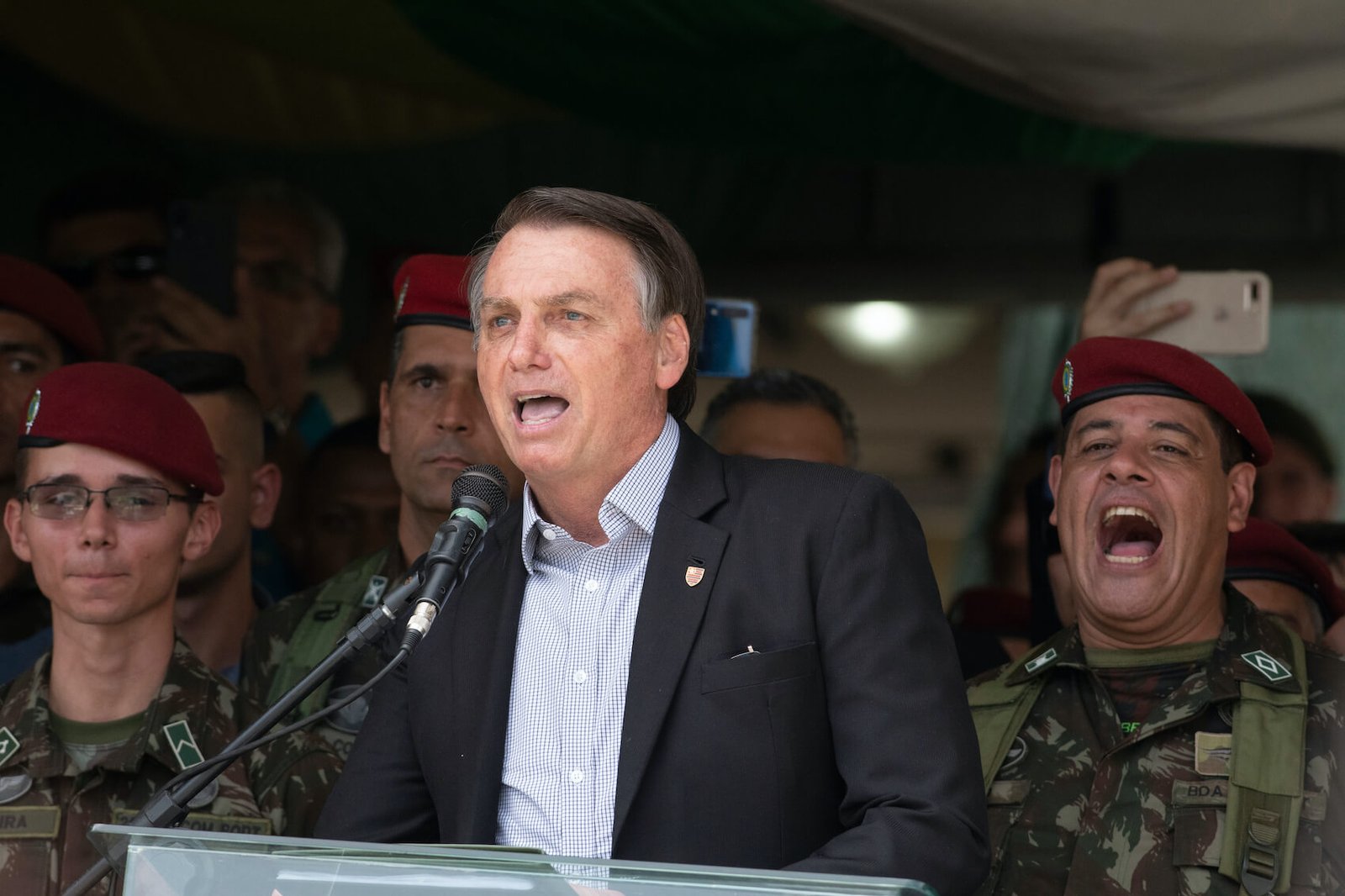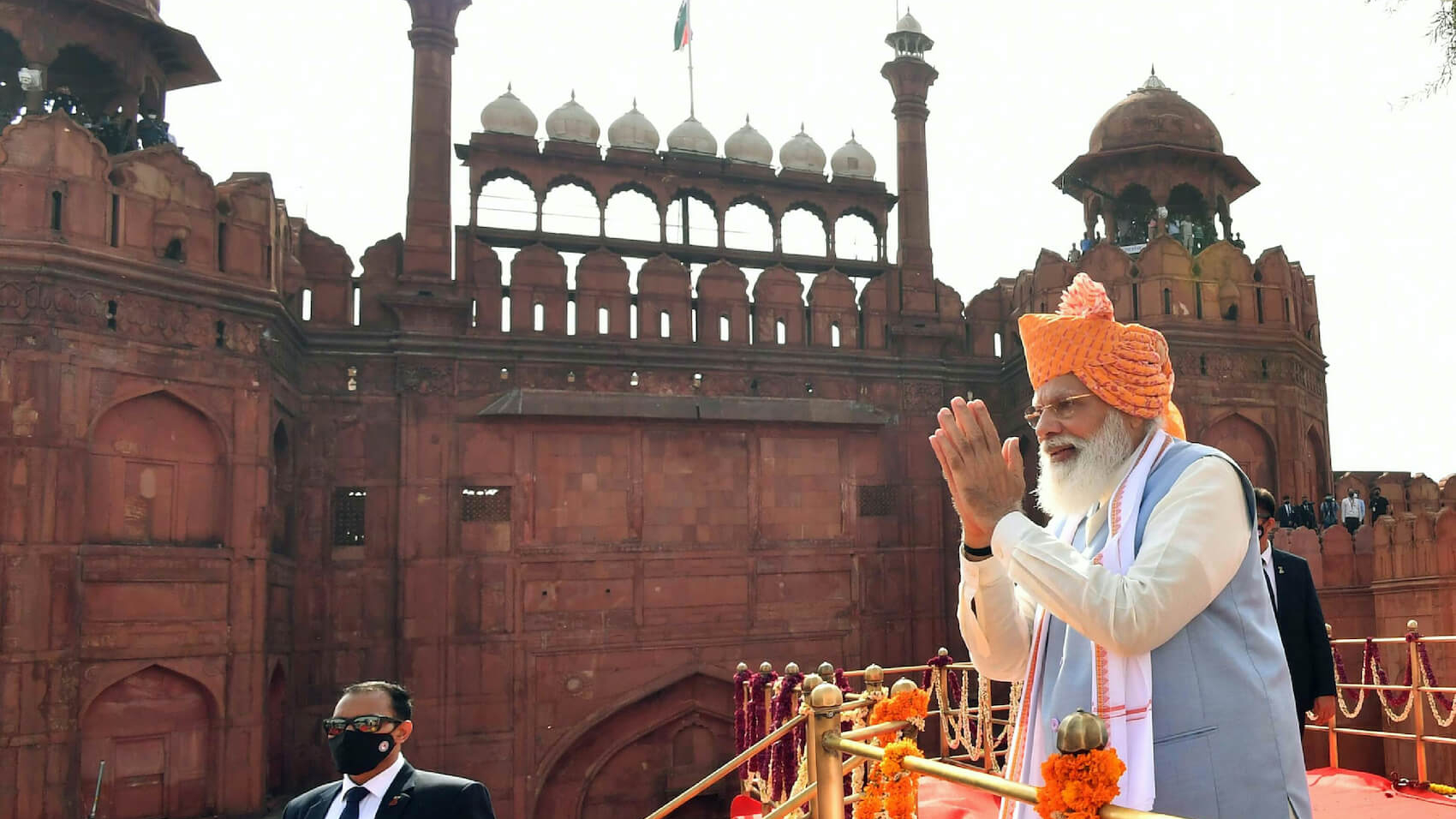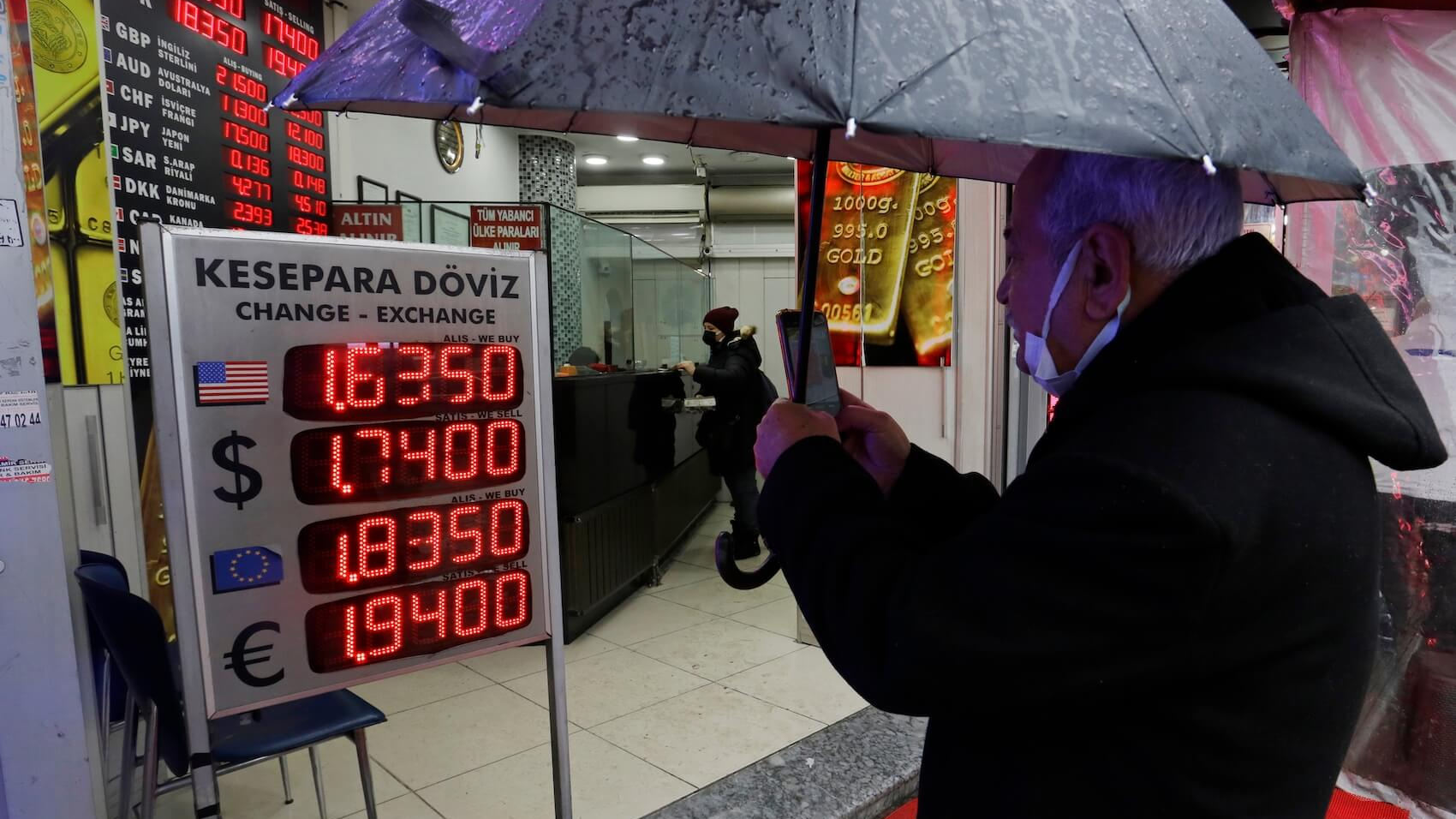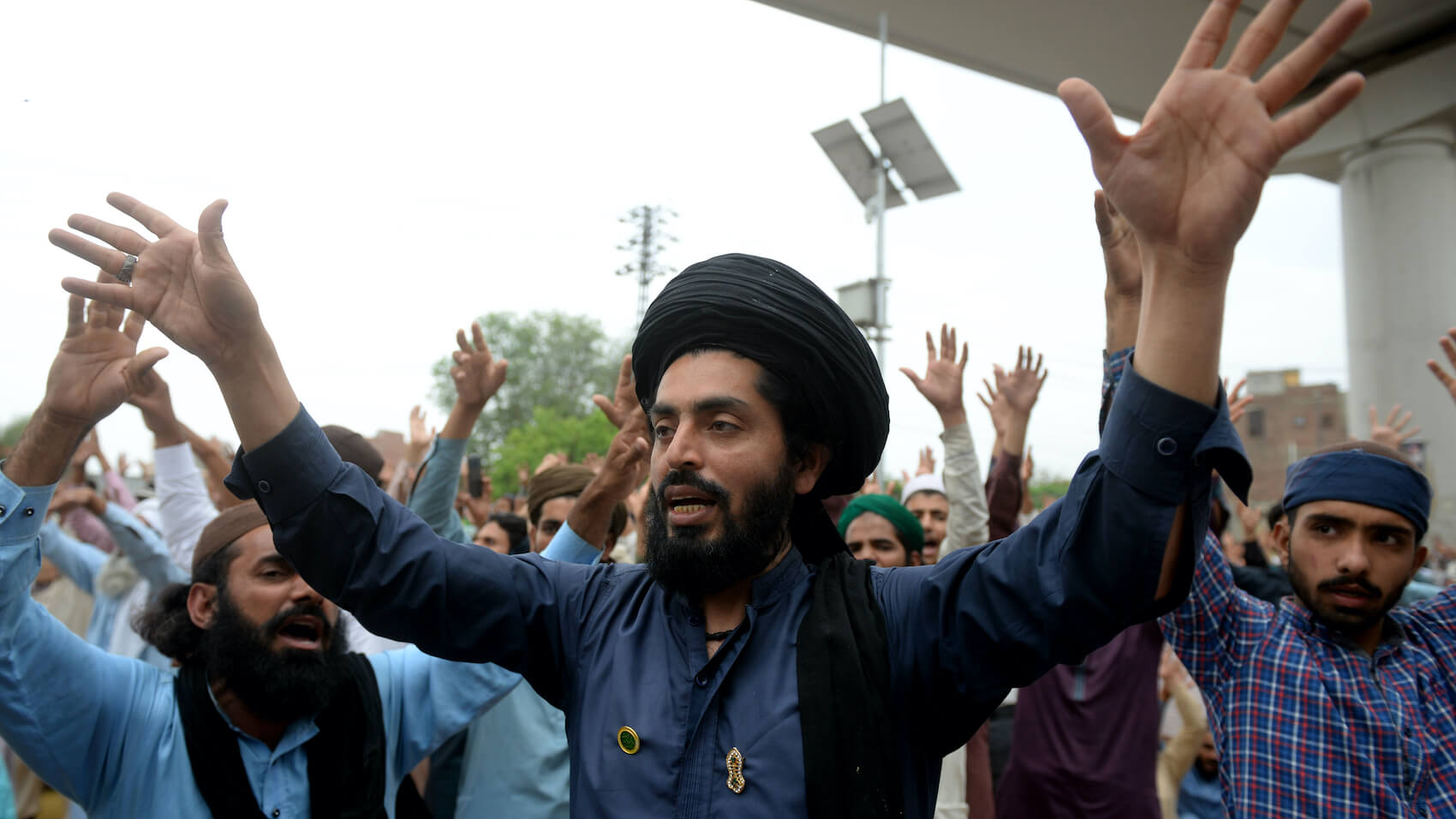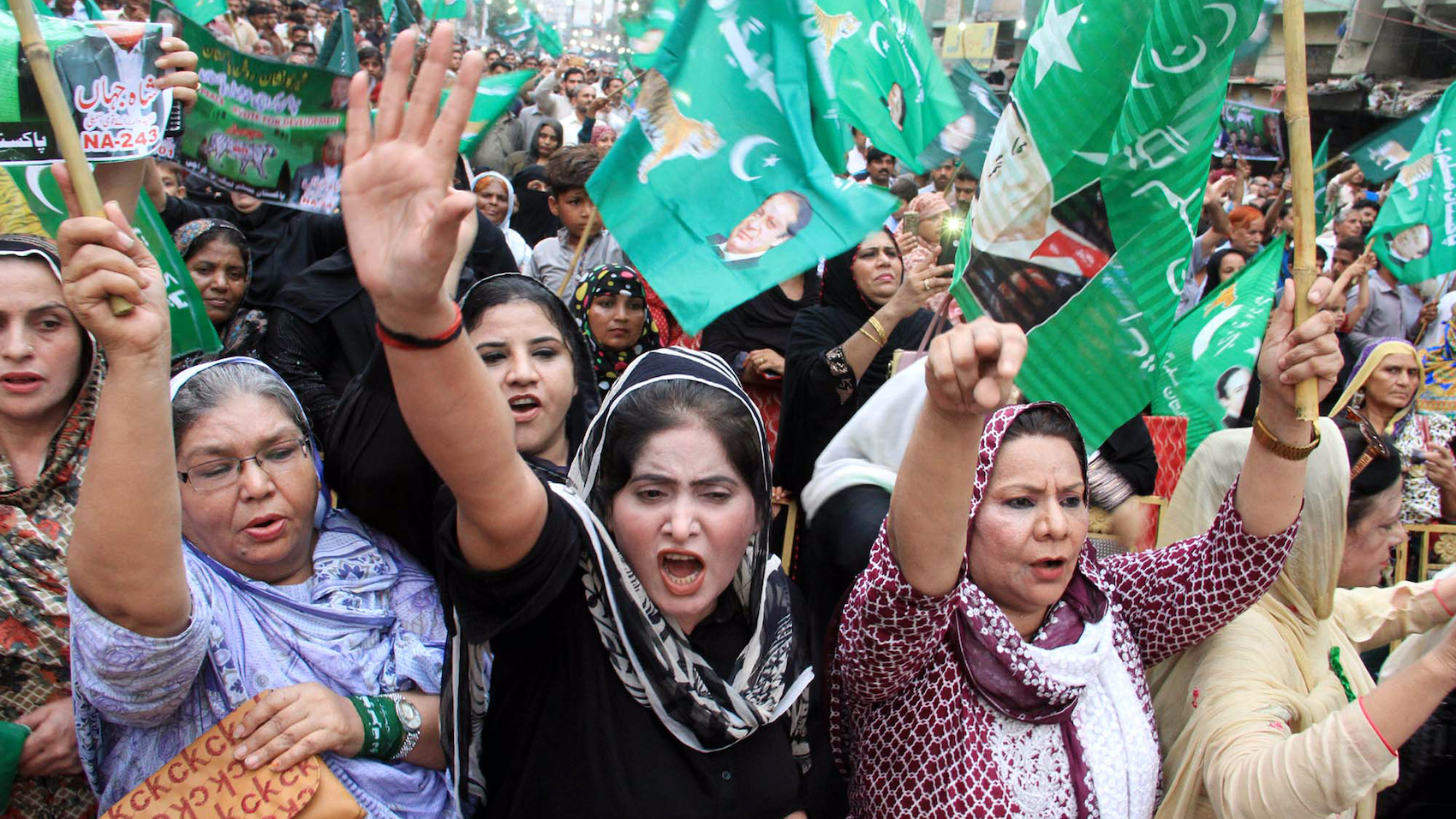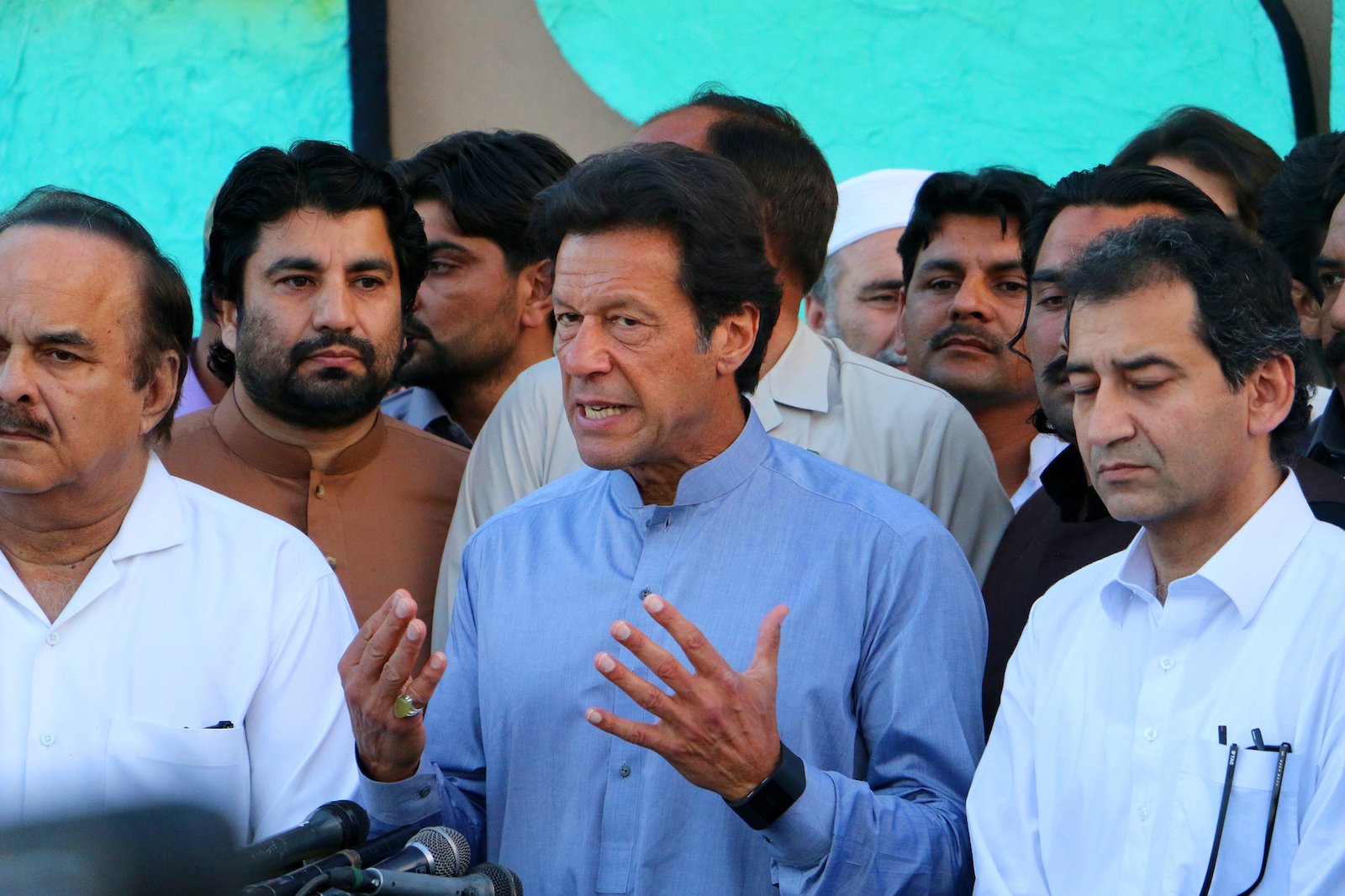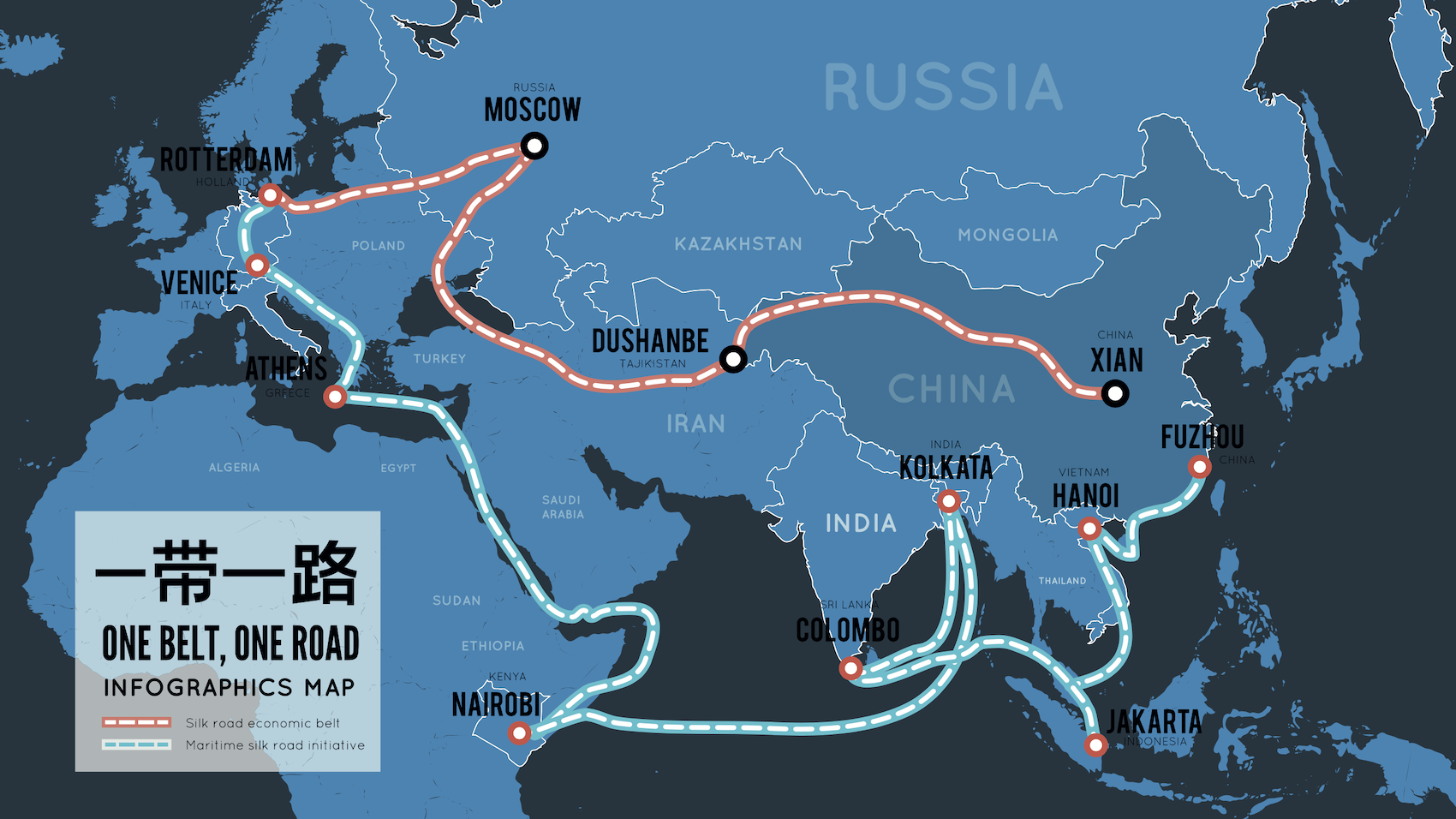Yilmaz, Ihsan & Morieseon, Nicholas. (2022). “Civilizational Populism Around the World.” Populism & Politics.European Center for Populism Studies (ECPS). July 31, 2022. https://doi.org/10.55271/pp0012
Abstract
This article addresses an issue of growing political importance: the global rise of civilizational populism. From Western Europe to India and Pakistan, and from Indonesia to the Americas, populists are increasingly linking national belonging with civilizational identity—and at times to the belief that the world is divided into religion-based civilizations, some of which are doomed to clash with one another. As part of this process, Hinduism, Buddhism, Islam, and Christianity have all been commandeered by populist parties and movements, each adept at using the power of religion—in different ways and drawing on different aspects of religion—to define the boundary of concepts such as people, nation, and civilization.
By Ihsan Yilmaz & Nicholas Morieson
Introduction
The latter part of the 20th century witnessed the decline of autocratic governments and the creation of many new liberal democracies across the world. After the collapse of the Soviet Union, liberal democracy appeared triumphant; some even began to describe the period as the ‘end of history.’ The phrase, borrowed from Francis Fukuyama (who used it in a complex and rather ambivalent way to describe the victory of capitalism and liberal democracy over its once powerful ideological rivals), described the growing sense that humankind had reached its optimal state, and that liberal democratic values were now almost axiomatic and without rival (Fukuyama, 2006).
By the mid-2000s, and following a series of political events of historical importance, the euphoria surrounding the collapse of the Soviet Union began to dissipate. The attacks on the United States on September 11, 2001, and the subsequent and disastrous wars in Afghanistan and Iraq, along with the rise of authoritarian China and the growth of extremist movements such as the Islamic State (IS), suggested that history had not ended, and that liberal democracy would continue to face many challenges. Russia’s transformation into a brutal dictatorship under Vladimir Putin, culminating in his expansionist war against Ukraine, signals perhaps a fundamental shift in international relations and a powerful challenge to liberal democracy. Yet the most potent challenge to liberal democracy may be coming from withinrather than from rival ideologies. On the one hand, while Russia and China may appear to represent an ideological challenge to the liberal democratic world, the two regimes require extreme information control and the punishment of dissidents in order to maintain authoritarian non-liberal governance. However, since the mid-2000s there has been a sharp decline in basic freedoms, and a deterioration of democratic institutions, in a significant number of democratic countries around the world (Repucci & Slipowitz, 2021).
According to Thomas Hobbes, there exists a social contract between the state and its people (or the monarch and their subjects). This contract effectively ensures that a government will guarantee the safety of the people it represents (Gauthier, 1988). Hobbes believed that human actions are driven by rational self-interest, and therefore argued that people would willingly enter into a social contract with the government and other people, on the basis that it was rational for individuals to do so in order to live in a society. In the 21st century, the social contract between citizens and their democratic governments appears to be breaking down. For example, Loke (2020) argues that the United States and other democratic nations have become ‘flawed’ democracies, in which the intangible yet meaningful bind between the state and its citizens has degraded. This disillusionment with the ‘elite’ or ‘establishment’ has led to a loss of trust in elected officials—and perhaps a loss of belief in the democratic process itself. The degrading of democratic politics, and the rise of an elite which is increasingly removed from the majority of citizens, has created an environment conducive to populism. Indeed, the growth of populism is one of the most significant political developments of the 21st century. Populist leaders, movements, and parties, across the world offer an alternative form of politics, one which promises to liberate ‘the people’ from elite rule and to ‘save’ them from the existential crisis elites have brought upon them through their corrupt misrule. In other words, elite failure and corruption is leading to a backlash in the form of populism.
Populism is ultimately a product of democratic societies, yet populists frequently violate liberal democratic norms. Indeed, scholars have increasingly regarded populism as a threat to liberal democratic values. Firstly, populism creates a political environment in which the rule of law or the rights of minorities may be discarded if they appear to obstruct the ‘will of the people,’ which populists claim is sacrosanct. Secondly, populism encourages an antagonistic politics in which two groups, ‘the people’ and ‘corrupt elites,’ are pitted against one another in an existential struggle for the nation. Populism thus flourishes on the divisive politics of ‘the people’ versus ‘the elite’ and ‘others,’ which deepens socio-political-economic rifts and exploits societal emotional pressure points and vulnerabilities (Yilmaz & Morieson 2021). One particular form of populism, which categorizes people according to their religious identities and asserts the incompatibility of different cultures, has proven especially influential in the 21st century. We call this form of populism ‘civilizational populism.’
The rise of civilizational populism throughout the world constitutes one of the key challenges facing liberal democracy in the 21st century. The growth of this political phenomenon not only demonstrates disillusionment with liberal democracy and its failures but suggests that the key lessons of the 20th century have been largely forgotten. Increasingly, the call to reject the negative emotions of ‘revenge, aggression, and retaliation,’ so common in the second half of the 20th century, is diminished. Emotionally charged monologues, too, are replacing dialogue between adversaries—dialogues that often pave the way toward mutual understanding. Ironically, having reached the ‘end of history,’ we witness a worldwide democratic regression symbolized best by the growth of civilizationalism, whether in the form of expansionist civilizational powers such as Russia and China, or in the form of populist civilizationalism. The decay of the liberal democratic order, which just twenty-five years ago seemed all but invincible, haunts the present, and the rise of civilizational populism threatens further harm to our democratic institutions and imperils religious and ethnic minorities the world over.
Civilizations are most often understood to be the “highest cultural grouping of people and the broadest level of social identity” (Huntington, 1993). Civilizations are often defined by religion, or at least by the religious identity of the majority of its members. For example, in his provocative, often wrongheaded but ultimately influential 1993 essay and subsequent book, Clash of Civilizations, author Samuel Huntington proposed that there at most nine world civilizations: Western, Latin American, African[1], Islamic, Sinic, Hindu, Orthodox, Buddhist, and Japanese. The reader will notice that many of these civilizations are defined by religion. This is of course not to endorse Huntington’s division of the world into these groups, a notion largely discredited; however, even if scholars do not endorse Huntingtonian civilizationalism, this does not mean that politicians disregard his ideas. Rather, Huntington’s ideas have proven highly influential in the United States and, to an extent, Europe; simultaneously, they reflect the views of large numbers of people across the world, who similarly believe the world can be divided in this manner and that civilizations form coherent blocs of nations whose peoples possess values incompatible with those of other civilizations.
Civilizational populism posits that democracy ought to be based upon enacting the ‘people’s will,’ yet it adds a new and troubling dimension to populism’s thin ideology: a civilization- based classification of peoples. Religion plays a defining role in delineating the boundaries between these civilizations, and civilizational populism is most often intrinsically bound up with religious identity and practice. As a result, Hinduism, Buddhism, Islam, and Christianity are instrumentalized by populists, who use the power of religion to define the boundaries of people, nations, and civilizations. Religion has thus become an important—at times central—aspect of civilizational populist movements across the world.
There is something especially dangerous about civilizational populism. Populism is often conceived of having two dimensions, one vertical and one horizontal (Taguieff, 1995: 32-35). The vertical dimension divides society between the people at the top and those at the bottom, or between ‘the people’ and ‘the corrupt elite.’ The horizontal dimension divides society between ‘the people’ and ‘others.’ Most often, these ‘others’ are ethnic minorities who appear to threaten the character of the nation or the hegemonic power of the majority group. This kind of populism is thus deeply nationalist, with few if any international or transnational dimensions. Civilizational populism, however, frames the vertical and horizontal dimensions of populism within a religio-civilizational context. As a result, civilizational populist leaders, parties, and movements tend to identify ‘the people’ and their enemies with particular religiously-defined civilizations.
Civilizational populism, then, can be a particularly pernicious form of populism. By couching the antagonistic political divisions inherent in populism within a civilizational frame and claiming that people of different civilizations possess incompatible ethical and moral frameworks, civilizational populists attempt to create societies in which religious minorities are viewed as intolerable existential threats. Equally, civilizational populism can be attached to any of the major world religions. In the following section, we examine civilizational populism within the context of the world’s major religions.
Civilizational Populism In the West

In a much-cited 2017 article, Rogers Brubaker (2017) observed how populist parties in North-West Europe have increasingly defined “the boundaries of belonging and the semantics of self and other…in civilizational terms.” Brubaker does not claim that populist parties in North-West Europe are anti-nationalist, but rather that they remain nationalist and define national belonging in religio-civilizational terms. Neither does he mean that a Christian revival is underway in Europe or that some kind of pan-European identity is promoted by populists. Rather, he means that European populists are increasingly identifying as Christian in order to define their culture as non-Muslim and by doing so legitimize their anti-Muslim immigration and cultural policies. Thus, rather than perceiving in Christianity a system of ethics and form of religious practice, populists instead use ‘Christianity’ or ‘Judeo-Christianity’ as “sacred code” words “to denote a secular, liberal order distinct from Islam, reflecting the culturalization of Christian religion in Europe” (Vollard, 2013: 94). The Dutch Party for Freedom (PVV), the second most popular party in the Netherlands, exemplifies the Christian civilizational populist trend in North-Western Europe. PVV leader Geert Wilders describes Dutch culture as the product of the “Judeo-Christian and Humanist” civilization of the West, and Islam as a “totalitarian” political tradition wholly at odds with the liberal humanism of the Judeo-Christian West.
In 2016, the PVV briefly became the most popular political party, according to polls, in the Netherlands. Perhaps the key reason behind Wilders’ and the PVV’s rise in popularity was the refugee crisis in the Middle East and North Africa, which saw over a million people—mostly Muslims—seek refuge in Europe from a series of wars and conflicts. The PVV capitalized on Dutch fears of a Muslim “invasion,” and, using incendiary and alarmist language, claimed the Netherlands was on the brink of Islamization and promised to “de-Islamize” the country (Wilders, 2016). The party also promised to ban all Muslim asylum seekers from entering Dutch territory, ban the construction of mosques, ban headscarves at “public functions,” and arrest suspected Islamic radicals (Wilders, 2016). The PVV’s radical programme struck a chord with voters, and though the party failed to win control of the government, they emerged as the second largest party in Dutch Parliament, winning 20 seats (though well behind the VVD, which won 33 seats) (Morieson, 2021: 47).
2017 saw a second anti-Muslim, Christian–identitarian populist party contest elections: the Forum for Democracy (Fvd). Party leader Thierry Baudet portrays himself as a lover of European culture and defender of the continent’s Judeo-Christian culture and heritage, which he claims is threatened by the traditional governing parties of the Netherlands and by Islam (Faber, 2018 & Morieson, 2021).
The PVV lost support during the 2021 election, perhaps because the perceived threat of Muslim invasion via the refugee crisis had not materialized. However, the PVV and FvD won 25 seats between them, a demonstration of the significant power of Christian identitarianism and right-wing populism in the Netherlands. Indeed, though the centre right VVD continues to dominate Dutch politics, after 2021, right-wing Christian identitarian populist parties possessed more seats than at any previous time (Damhuis, 2021).
While Brubaker described civilizational populism as something endemic to North-West Europe, there is ample evidence which suggests the phenomenon is far more widespread (Kaya, 2021; Kaya & Tecman, 2021). In Central and Eastern Europe, civilizational populism is present in Poland’s ruling Law and Justice Party (PiS) and Hungary’s ruling Fidesz party. Fidesz has proven to be the most enduring ruling populist party in Europe, and their combination of populism, ethnic nationalism, and Christian civilizationalism has proven especially potent. Fidesz (Fiatal Demokratak Szovetsege — Alliance of Young Democrats) began as a liberal, anti-communist student–led movement in the 1980s and entered formal politics in the early 1990s, when Hungary experienced its first free elections (Ádám & Bozóki, 2016: 132). When Fidesz first won power in 1998, it was under the leadership of Viktor Orbán, who solidified the party’s centre-right, social conservative orientation. During subsequent years in opposition (2002-2010), and following the party’s return to power (2010-), Fidesz has become increasingly nationalist, socially conservative, populist, and illiberal, cementing itself as the dominant political force in Hungary (Ádám & Bozóki, 2016: 130-131; Buzogány, 2017).

The use of Christianity in Fidesz’ populist discourse can be observed in the party’s complex relationship with the European Union and neoliberal economics. Orbán has on numerous occasions attacked the European Union, calling it a threat to “Christian freedom” (Hungary Today, 2019). According to Orbán, Christian freedom means “patriots instead of cosmopolitans, patriotism instead of internationalism, marriage and family instead of promoting same-sex relationships, protection of the children instead of drug liberalization, border protection instead of migration, Hungarian children instead of migrants and Christian culture instead of a multicultural mishmash” (Hungary Today, 2019).
Yet Fidesz’ Christian identity populism is most evident in Orbán’s anti-immigration rhetoric, which is based upon notions of Hungary as a Christian society with Christian values, and Islam as fundamentally incompatible with these values. This became especially evident during the 2015 refugee crisis, during which the Fidesz-led government refused Muslim refugees entry into Hungary (Haraszti, 2015: 39). Moreover, the party has attempted to boost fertility within Hungary through a set of ‘family friendly’ policies in order to create a stable population that does not require immigration to facilitate economic growth (Walker, 2019). According to Orbán, by permitting mass immigration from the Middle East and North Africa, Western powers have “opened the way for the decline of Christian culture and … Islamic expansion” (Boffey, 2018). Fidesz, however, has “prevented the Islamic world from flooding us from the south” (Boffey, 2018). Yet Orbán does not believe that secular political power is enough to stop Islamization. Rather, he says, “Europe’s last hope is Christianity” (Macintyre, 2018).
Donald Trump, particularly when running for, and in the first year of his term as President of the United States, also used civilizational rhetoric. For example, Haynes (2021) describes Trump as repeating the orientalist tropes of Samuel P. Huntington’s Clash of Civilization’s thesis in his rhetoric on the relationship between Islam and ‘Judeo-Christian’ America. Haynes argues that Trump did not follow the path of Presidents Bush and Obama, who stressed that the United States was at war with “terror” and not Islam. Instead, using reckless language, Trump perpetuated the idea of a clash of civilizations between Islam and Judeo-Christianity and failed to distinguish between ordinary Muslims and violent Islamist terrorists. However, Trump showed little interest in actually fighting a ‘clash of civilizations’ as president and dismissed both Steve Bannon and Sebastian Gorka—two of the most outspoken civilizational nationalists in his administration—within weeks of each other in 2017. On the other hand, a number of the Trump administration’s decisions appear to be concrete manifestations of Trump’s belief that the United States is a Judeo-Christian power incompatible with Islamic civilization. For example, following the mass murder of 49 people at a gay nightclub in Orlando, Florida in June 2016, a crime committed by a Muslim man, Omar Mateen, who had sworn allegiance to the Islamic State, then–candidate Donald Trump spoke at length on the danger posed to the United States by what he called “radical Islam” (Beckwith, 2016). Trump had previously argued that Muslim refugees from war–torn nations in the Middle East threatened America. For example, in a tweet deleted by Twitter following his banning from the social media service, Trump “used clearly existential tones by pronouncing that taking in refugees from Syria (who he assumed to be potential terrorists) would lead to ‘the destruction of civilization as we know it!’ (Hall, 2021).
Although Trump claimed that America has many “great” Muslim communities, he also attacked Muslim Americans for not reporting “bad” people to authorities, and therefore bringing death and destruction to the United States (Beckwith, 2016). Furthermore, portraying the nightclub shooting as part of a clash of civilizations, he claimed that many of the “radical” Islamic principles Mateen and other people like him hold are “incompatible with Western values and institutions” (Beckwith, 2016). Rather, Trump claimed that “radical Islam is anti-woman, anti-gay and anti-American,” and even “enslaves women” and that therefore, he personally refuses “to allow America to become a place where gay people, Christian people, Jewish people are targets of persecution.”
Once elected President and during an official visit to Poland in 2017, Trump praised the nation’s right-wing populist government, suggesting that their strong anti-immigration, anti-Islam policies served to protect “the West.” In a speech in Poland which further revealed the civilizationalism inherent in Trump’s conception of world politics, he claimed that “the fundamental question of our time is whether the West has the will to survive. Do we have the confidence in our values to defend them at any cost? Do we have enough respect for our citizens to protect our borders? Do we have the desire and the courage to preserve our civilization in the face of those who would subvert and destroy it?” (Thrush & Hirschfeld Davis, 2017). Historian Stephen Wertheim, writing shortly after this speech, described Trump’s “civilizational framework” as a continuation of Obama–era justification of America’s wars in Afghanistan and Iraq while also adding a new element in which America’s “forever wars” were framed as part of a policing of the “enemies of civilization” (Wertheim, 2017).
Civilizational Populism in Muslim Majority Nations

Yilmaz, Morieson, and Demir (2021) observe that “Islamic populist framing may take on nationalist forms, or civilizationalist forms, though often these are found in combination.” In Islamic or Islamist populism, the vertical and horizontal dimensions of populism are embedded within an Islamic framing. This means that the social and economic justice concerns inherent in Islam can be instrumentalized by Islamic populists in order to serve their anti-elite and xenophobic agendas. Islamic populist parties, though all too rarely examined by scholars, have found a significant amount of electoral success in a number of Muslim majority nations in the 21st century (Hadiz, 2018: 567). Hadiz (2018: 567), for example, has examined Islamic populism in Indonesia, Egypt, Tunisia, and Turkey, and observes that for populism to succeed in these countries “cultural idioms associated with Islam are required…for the mobilisation of a distinctly ummah-based political identity in contests over power and resources in the present democratic period.”
While Indonesia and Pakistan are home to populist Islamist groups, perhaps the best example of civilizational populism in the broad Islamic world is the Justice and Development Party (AKP) in Turkey. Since 2002, Turkey has been ruled by the AKP, a populist and Islamist party, which has governed in an increasingly authoritarian and repressive manner during their two decades in power. Initially, however, the AKP sought to portray itself as a Muslim democratic party supportive of pluralism, openness, and human rights. The AKP’s decision to portray itself in this manner was prompted by the events surrounding Turkey’s 1997 “postmodern coup,” in which the right-wing Islamic government led by Prime Minister Necmettin Erbakan was deposed by the Turkish ‘deep state’ and replaced by a secularist military establishment (Yilmaz & Bashirov, 2018). The coup, which was intended to greatly diminish the role of Islam in Turkish politics and society, was in many ways a continuation of the Kemalist hegemony the country had experienced since it was established in the 1920s by Kemal Ataturk himself.
Capitalizing on the Turkish people’s desire to liberate themselves from military tutelage and Kemalist repression, the AKP won power in 2002. The party at first governed as Muslim democrats, insofar as they pushed for greater democratization, initiated a reconciliation process with Kurds and other minority groups, committed to joining the European Union, and even began discussing the possibility of recognizing the Armenian genocide (Yilmaz & Bashirov, 2018). However, between 2007 and 2011, the AKP began to shed its democratic and pluralist imagine and instead sought to capture the state and dominate Turkish politics and society. In this process, the AKP – and particularly its leader, Recep Tayyip Erdoğan – alienated many of their allies in political and civil society, while simultaneously incapacitating the threat posed by the Kemalist-dominated judiciary and military.
As the AKP evolved in office, its increasing authoritarianism and Islamism altered its populist discourse. After 2013, in particular, the AKP invested much effort in portraying religious minorities, foreign governments, even entire ‘civilizations’ as enemies of the people and of Islam. The AKP’s new strategy was built on an emotional populist campaign which exploited Turkish people’s ontology, security, and feelings of trauma. The party began to re-engineer Turkish identity in an effort to demonize and dehumanize its enemies. Secularists and liberals, Gülenists, and many ethnic and religious minorities, were now portrayed by the party as threats to Islam and Turkish Sunni Muslims. The AKP also began to emphasize ever more the primacy of Sunni Islam in Turkish culture and identity, as well as the glory of the Ottoman Empire, seat of the Caliphate for centuries. Thus, Erdoğan and the AKP set about creating a divisive and populist ‘us vs them’ politics in Turkey, in which Turkish Sunni Muslims were portrayed as an aggrieved yet innocent people, and the Kemalist secular elite—and almost all other religious and ethnic minorities—portrayed as threats to the people and their faith. The AKP used deep emotional insecurities to evoke feelings of victimhood in the majority population, who were said to be oppressed by “dark forces.” These imagined “dark forces” range from foreign enemies to domestic foes of the AKP who are alleged to be working with foreigners to destabilize Turkey. Thus, the AKP encourages Turkish Sunni Muslims to feel that they are under constant attack from “non-Turkish Muslims, such as Kurds and Lazes, …and non-Muslims, such as Christians and Jews” (İnce, 2012: 40). These minority groups are now essentially unwanted citizens in Turkey, a group which now includes members of the Gulen movement, journalists, academics, opposition leaders, human rights activists, and political opposition who have been critical of the AKP regime (Yilmaz, 2018). All these groups are now ‘the other’ in Turkey, and, combined with xenophobia towards the West and Jews, all are portrayed by the AKP as internal “traitors” who do the bidding of external “dark forces” trying to “destabilize Turkey” (Yilmaz, 2021).
The existence of this expansive lists of “others,” as well as the vast numbers of people who are alleged to be involved in conspiracies to hurt the Turkish people, create a state of constant crisis which feeds emotions that generate demand for populist solutions. Moreover, by encouraging their supporters to feel a sense of trauma and accompanying emotions of loss, “humiliation, vengeance and hatred,” the party is able to “trigger unconscious defence mechanisms which attempt to reverse these emotions” (Yilmaz, 2021: 11).
The AKP’s emotional exploitation of ‘the people’ is based on three themes: “Islamism, nationalism, and populism,” which are used as merged concepts (Taş, 2020: 2). By merging Islamism, Turkish nationalism, and populist ideation “Erdoğan has thus been presented as the voice of deprived ‘real people’ and their champion of their interest against old ‘elites’,” while at the same time “the party also pursued an Islamist, anti-secular project involving mandatory religious education of the young, and a ‘post-Kemalist neo-Ottomanist outlook in identity politics’ that radically altered Turkey’s sense of itself and elements of its foreign policy” (Yilmaz, 2018: 54–55). The AKP’s Islamist populism has proven very potent and has allowed the party to gradually Islamize Turkey over the two decades of its increasingly authoritarian rule.
Civilizational Populism In India

In Hindu–majority India, the nation has begun a process of transformation under the ruling Bharatiya Janata Party (BJP) and its Prime Minister, Narendra Modi, and their guiding political philosophy, Hindutva. Hindutva is a form of Hindu nationalism which posits that India must return to Hindu principles in order to raise the nation to the greatness it experienced in the pre-Muslim period. Under Modi’s leadership, the dominant political narrative shifted from right-wing nationalism to populism while maintaining a reliance on the Hindutva narrative of Hindu victimhood and nostalgia for the lost golden age of Hindu civilization.
Running for Prime Minister, Modi erected billboards containing a picture of himself accompanied by the text: “I am a Patriot. I am Nationalist. I am Born Hindu” (Ghosh, 2013). During the same period, the BJP called for the building of a society for Hindus and run by Hindus, justifying their agenda through the Hindutva call for the “cleansing” of “impurities” from society. In this narrative of crisis, Modi was the “born Hindu” and “ideal Indian” who would lead the country as a “strongman” and revive the glory of the Hindu rashtra (Hindu kingdom) (Lefèvre, 2020). Because the BJP frame Indian culture and the nation as the product of Hindu civilization, to love India and its culture is, according to the BJP, to either love—or at least respect—and obey the rules of Hindu culture. Or as Irfan Ahmad (2017) put it, “Hindutva defined Indianness exclusively in religious terms: an Indian is someone who considers India as their holy land.” This religious exclusivism is reflected in the party’s “abrogation of article 370, the ban on cow slaughter and the construction of a Ram temple in Ayodhya,” which the BJP claims are necessary acts to revive and protect Hindu culture (Ammassari, 2018: 8). These actions are also framed as attempts to invalidate the “invasion” of India and to purify it in order that Hindu civilization may regain its lost glory (Ammassari, 2018).
The BJP has also pushed for a change in the school curriculum that promotes civilisational populism by restructuring history and cultural identity (Yilmaz & Shakil, 2021). Post-2014, the Hindutva version of Indian history has increasingly blurred the lines between culture and history, fact and fiction. These changes were justified by RSS’s Manmohan Vaidya, who claimed “the true colour of Indian history is saffron and to bring about cultural changes we have to rewrite history” (Jain & Lasseter, 2018). The BJP–written syllabus uses history to set a “Hindu first” narrative, in which other cultural influences are depicted as products of ‘invader’ Muslim and Christian cultures.
Civilizational Populism In Buddhist Majority Nations

The relationship between Buddhism and populism is rarely studied, and yet there are concrete examples of Buddhism being instrumentalized by populist leaders in two majority Buddhist nations: Myanmar and Sri Lanka. In Myanmar, a multi-ethnic country (where no single ethnic group comprises more than 2 percent of the population), religious identity has been heavily politicized. 89 percent of the population identify as Buddhist, and therefore the state has often used Buddhist identity to create a sense of national belonging and nationhood. This is not a recent development, as the “To be Burmese means to be Buddhist!” slogan of the 1940s movement for independence demonstrates (Artinger & Rowand, 2021). However, 11 percent of Myanmar’s citizens are non-Buddhist, and there is a significant Muslim minority. This situation has been exploited by populists who identify Buddhism as a core element of Myanmar’s identity, and thus the identity of ‘the people,’ identification with another faith is inherently threatening to this identity and to political efforts to make the country more homogenous.
While the 2014 return of democracy to Myanmar was widely lauded, it coincided with a period of increasing religious conflict and anti-pluralism, much of which was instigated by nationalist-populist Buddhist groups. Buddhist populist-nationalism in Myanmar is promoted by a number of influential groups, especially Mabatha (MBT or Ma Ba Tha) and the 969 movement. Populism is deeply embedded in the discursive practices of these groups. Mabatha and the 969 movement, for example, claim their political mission is to safeguard “the Buddhist identity of the country” (Fuller, 2018). As part of this mission, they claim that Muslims are an existential threat to the nation’s Buddhist identity and call for the elimination of threats to this Buddhist national core. Mabatha and the 969 movement have become highly influential groups over the past 20 years, and the political landscape of Myanmar has been predominately shaped by the nationalist Buddhist populism espoused by these two groups. Their power extends even into other parties and political movements, and fear of this power no doubt played a role in the Aung San Suu Kyi–led democratic government ignoring the ethnic and religious ‘cleansing’ of Rohingya Muslims from parts of the country.
In the late 1990s, a 40-page booklet authored by a government official named Kyaw Lwin, and titled “969,” appeared and “urged Buddhists to openly display the numbers 969 on their homes, businesses and vehicles” (Moe, 2017). The book did not openly call for violence or discrimination against any particular group, but displaying 969 was intended to be a way for Buddhists business owners and consumers to distinguish themselves from Muslims, who often displayed the number 786, signifying an Islamic prayer: “the Name of Allah, the Compassionate and Merciful” (Bookbinder, 2013). The booklet insinuated that Muslims were trying to demographically and economically “conquer” the Buddhist population, and that Buddhists must fight back (Frydenlund, 2018; Moe, 2017 & Bookbinder, 2013). This notion spread throughout Myanmar, partly through its adoption by Buddhist education facilities, such as “Buddhist Sunday Schools, volunteer groups, legal clinics, relief campaigns, donation drives, and other community oriented activities” (Thu, 2021: 205). Ashin Wirathu, a monk, became the face of the 969 movement. Wirathu was imprisoned by the military junta for hate speech in 2003 and was released as part of a large group of political prisoners set free in 2012 (Hodal, 2013). Following his release, he campaigned relentlessly on behalf of the 969 movement, and after it was banned, inspired the formation of MBT and later became a party leader. Wiarthu’s activities helped create a wave of Islamophobia in the country, mixing “Buddhist conspiracy theories envisioning an Islamic take-over” and fear of Muslim “terrorists” (Artinger & Rowand, 2021; Frydenlund, 2018 & Bookbinder, 2013). This has led MBT and the 969 movement to become identified by many Buddhists in Myanmar as “protectors” of “the Buddhist identity of the country” (Fuller, 2018).
In MBT discourse, the Buddhist majority are portrayed as victims of violence instigated by ‘others,’ most often Muslims. MBT has used events such as the destruction of the Bamiyan Buddhas in Afghanistan by the Taliban to create their narrative of a Muslim threat and Buddhist victimhood (Thu, 2021: 208). Myanmar’s Muslim minority are therefore portrayed as enemies and a danger to inherently peaceful Buddhist society. Yilmaz et al. (2021) note that MBT “claim that Muslims are an existential threat to the nation’s Buddhist identity and call for the elimination of threats to this Buddhist national core.” MBT enjoys the support of various politicians in Myanmar, including some pro-democracy politicians, and such is their power that any political party or critical voice contradicting their populist rhetoric is ‘othered’ by MBT’s leadership and accused of being “Muslim sympathisers” (Oppenheim, 2017). For instance, Nobel Peace Prize winner Aung San Suu Kyi and her party, National League for Democracy (NLD), perhaps fearful of incurring MBT’s wrath, did not nominate Muslim candidates during the 2015 elections, which led to a “Muslim Free Parliament” (Thu, 2021: 206). It was also Suu Kyi’s government (2016-21) which tolerated MBT–led violent rhetoric against Muslims, rhetoric which helped lead to the 2017 genocide of the Rohingya people (BBC, 2018).
MBT also involves itself in transnational civilizational populism. The ideas of the extremist populist monks have been shared with the radical Sri Lankan Buddhist organization, the Bodu Bala Sena (BBS, Buddhist Power Army); the two groups have held joint meetings and conventions (Sirilal, 2014). Ashin Wirathu led this union and presented it as a union required to “defend” Buddhism around the world, saying, “today, Buddhism is in danger. We need hands to be firmly held together if we hear alarm bells ringing” (Sirilal, 2014). On a sperate occasion Wirathu also said that “once we [have] won this battle, we will move on to other Muslim targets,” indicating that there are no geographical limits to his civilisational populism (Hodal, 2013).
In Sri Lanka, Buddhist nationalist populism has also played an important role in both the political sphere and in defining Sri Lankan identity. Unlike ethnically diverse Myanmar, 70 percent of the population of Sri Lanka is Sinhalese Buddhist, making them a powerful majority ethnic group. Tamils are the largest minority, and constitute around 15 percent of the population, while Muslims, Hindus, and Christians together make up less than 13 percent of the population (Department of Census and Statistics, 2012). In Sri Lanka, then, ethnicity and religion have been somewhat bound together. This puts Sinhalese Buddhists in a powerful position and has allowed them to largely determine Sri Lanka’s political agenda and identity.

Sinhalese Buddhist Nationalism (SBN) has been the driving force behind populism in Sri Lanka (Jayasinghe, 2021: 178). But the activities and preachers of Buddhist organizations such as Bodu Bala Sēna (BBS) also play a prominent role in pushing anti-Muslim, pro-Buddhist discourses. Unlike other SBN organizations, BBS “is unique for being almost exclusively an anti-Muslim front” and has carried out many violent anti-Muslim campaigns since 2012 (Jayasinghe, 2021: 186). The power of Sinhalese Buddhist Nationalism led to state–led, systematic discrimination against the Tamil minoritywho reacted to their oppression by forming the resistance group, the Tamil Tigers (LTTE) (Jayasinghe, 2021; Yilmaz, Morieson & Demir, 2021). Tamils were considered “aliens” with no claims in the newly independent Sri Lanka and were frequently denied citizenship or deported to India; others became victims of ethnically motivated killings and were at times prevented from entering higher education—events that ultimately led to a civil war (Carothers & O’Donohue, 2020). In this context the militant Tamil Tigers, “became active in seeking an independent homeland for the Tamils. The conflict, which ended in 2009, also had a religious dimension as the Tamil population is predominately Hindu and the government is mainly Buddhist. Over two decades of fighting, a number of failed efforts were made to bring peace. This led to thousands of casualties on both sides … and hindered economic development” (Shakil, 2021). While the end of thecivil war opened a peace process, populist Prime Minister Mahinda Rajapaksa, in 2009, portrayed the war as a victory for SBN (Jayasinghe, 2021: 183). Sri Lankan Prime Minister until 2015, Rajapaksa capitalized on ethnic and religious divisions between Tamils and Sinhalese in his rhetoric but, following the end of the civil war, shifted to the process of ‘othering’ the country’s Muslim minority community (Jayasinghe, 2021; Shakil, 2021; Yilmaz, Morieson & Demir, 2021).
During his 2009-2015 tenure as Prime Minister, Rajapaksa portrayed himself as fighting for ‘the people’ against Sri Lanka’s elites, who he claimed were corrupt. He promised to improve the country’s economy (Shakil, 2021). At the same time, there was second dimension to his populism, which was rooted in SBN: “During Rajapaksa’s rule, critics of his political style and agenda were portrayed as enemies of the nation or collaborators with the enemy. Sri Lankan society was divided between the ‘patriot’ (dēshapremi) and the ‘traitor’ (dēshadrōhi)” (Jayasinghe, 2021: 183), with opponents of Rajapaksa portrayed as treasonous enemies. Against this backdrop, “Rajapaksa shied away from criticizing the unlawful activities of SBN groups, including their use of violence against Muslims and other minorities, due to the power and influence of SBN in Sri Lankan politics and society” (Yilmaz, Morieson & Demir, 2021).
While the war against the Tamil Tigers is over, and even though Tamil people largely do not yet feel entirely welcome in Sri Lanka, SBN discourse has moved from othering Tamils to inciting fear of Muslims and other minorities (Mihlar, 2020). SBN has, since the end of the civil war, become increasingly powerful due to a wave of anti-Muslim sentiment growing since the 9/11 attacks and rise of international jihadism. Muslims are, in the post-9/11, post-civil war environment, perceived as “a security threat” and accused of “extremism” and “intolerance” by the Sri Lankan state (Haniffa, 2021; Mihlar, 2020). Other minority groups have also sought to demonize Muslims, though in different ways. For example, “Tamil anti-Muslim hatred, attacks and violence focus on the group whilst Sinhala/Buddhists target the group and the religion” (Mihlar, 2020).
Rajapaksa, having lost his position as Prime Minister in 2015, returned to political prominence when Gotabaya Rajapaksa, his brother and a former army leader during the civil war, came to power in 2019 (Jayasuriya, 2019). While G. Rajapaksa used populist anti-elitist rhetoric, his main appeal to voters was that he was a former war “hero” and a strongman who had led the country to ‘victory’ against the Tamil ‘insurgents.’ But with the civil war receding into memory, the ‘strongman’ instead portrays himself as protecting the nation from Muslim radicals, such as the Muslims responsible for the Easter Bombing (Shakil, 2021).
The now former Prime Minister G. Rajapaksa, who fled the country after its economic collapse, punished Muslims, banning face veils, conducting arbitrary arrests of alleged radical Muslims, and closing down seminaries. Formally, under the “deradicalisation from holding violent extremist religious ideology” section of the Prevention of Terrorism Act, the country banned the wearing of burqas and closed some 1,000 Islamic organizations to supposedly prevent extremism (Haniffa, 2021). This fear is the legal and political manifestation of a belief that Muslims, funded by foreign powers such as the Gulf countries, are attempting to Islamize Sri Lanka (Mihlar, 2020). Whatever government emerges following the 2022 revolution will have to deal with the legacy of religious populism in Sri Lanka and its dividing of citizens into ingroups and outgroups based on religious identification.
Buddhist right-wing populist organizations across Sri Lanka and Myanmar thus share important commonalties. Both are beholden to a crisis narrative aimed at inciting emotions such as fear of non-Buddhists, especially Muslims. This nativist and civilizationalist narrative is based on the notion that there is a growing clash of civilizations between Buddhism and Islam, propagates suspicion and hatred of non-Buddhists, and deems Muslims in particular an alien and existential threat in Buddhist lands. In both Sri Lanka and Myanmar, monks have not only spewed hate speech in monasteries but have also used social media to spread their speeches and legitimize anti-Muslim conspiracies, leading to mob violence targeting mostly Muslim businesses, places of worship, and private property.
Conclusion
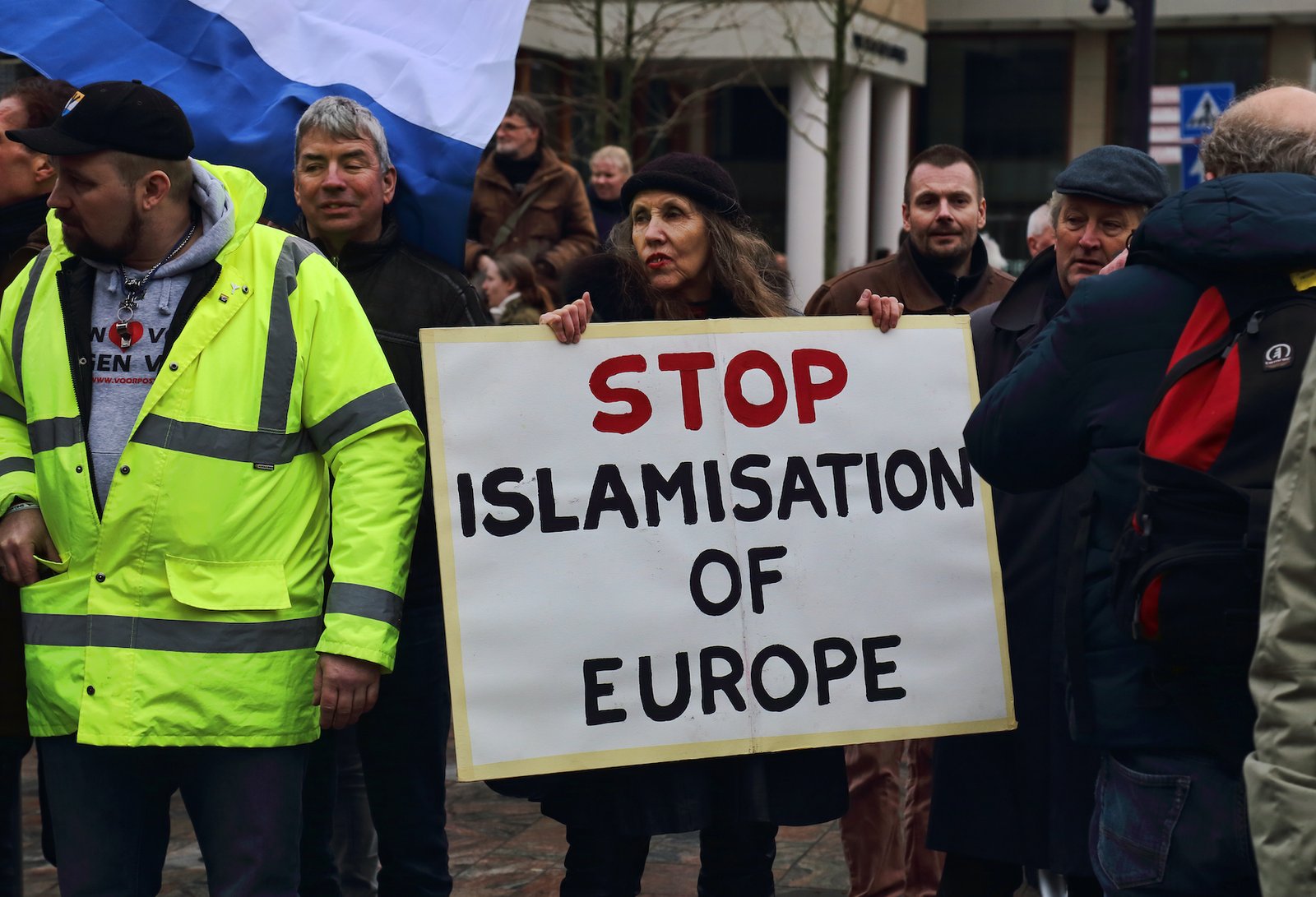
This article shows that the use civilizational rhetoric by populists has become common in many democratic nations and in a variety of political and religious contexts. In each case we have examined in this short article, we find civilizationalist rhetoric incorporating religion, though in two broadly different ways. Populist parties and leaders using civilizational rhetoric may align themselves with religious groups or organizations and may pursue a religious domestic and/or foreign political agenda, as has occurred in Turkey, India, and, to a degree, Hungary, among other places. On the other hand, civilizational populists may adopt a religious identity but not pursue a religious agenda nor develop ties with religious organizations. This appears to occur in the more secularized regions of the world, especially in Western Europe and deeply secularized nations such as the Netherlands.
In either case, populists’ civilizational rhetoric is part of an electoral strategy designed to portray governing elites as responsible for an existential civilizational crisis threatening to destroy the culture and identity of the nation and its people. In much of Western Europe, and to a degree in the United States, immigration (exacerbated by low fertility rates) is the main cause of the civilizational crisis. Governing elites are blamed by civilizational populists in Western nations for encouraging Muslims, who are framed as belonging to a foreign and incompatible civilization, to migrate to the West—and in such numbers that they threaten to destroy the culture and identity of the nation and its supposed Judeo-Christian or Christian tradition.
Outside the West, it is often the presence of religious minority groups, and at times the influx of Western ideas and culture, which is framed as a crisis engulfing the nation. In India, the presence of Muslims is held by the BJP to be an existential threat to the nation, preventing the true ‘people’ from reconstructing the mighty Hindu civilization of ancient times. The Turkish AKP claims that Turkey is the leading nation of the Islamic world and legitimizes its military interventions in places like Syria by claiming it is acting as the protector of Sunni Muslims across the world. At the same time, the AKP alleges that foreigners, non-Sunni Muslims, and especially the Christian West, are involved in a conspiracy to dismember Turkey and destroy Islam, and that the Turkish people must fight against these ‘dark forces’ which threaten their culture, nation, and Islamic civilization.
It is significant that, despite their use of civilizational rhetoric, the populist parties and leaders we examined remain nationalists. The purpose of civilizational rhetoric among populists, then, is to classify people into ingroups and outgroupsand, ultimately, to determine who belongs to the nation. In other words, civilizational populism appears to be a nationalist phenomenon, and though there are examples of transnationalism civilizational populism, in no case does it threaten the overwhelmingly nationalist character of the populist parties and leaders examined in this article. Civilizational populism, therefore, works best when it can harness the deepest fears of the majority population, particularly the fear of being ‘replaced,’ and thus when it can either exploit or produce a ‘minority-majority complex.’ In an age defined by liquid modernity and the fluid movement of people, money, goods, and ideas throughout the world, and when mass immigration—sometimes the result of war—is destabilizing a wide array of societies, civilizational populists possess many opportunities to exploit ontological fears and produce emotions which create demand for their populist solutions.
Civilizational populist leaders are responsible in part or wholly for a significant amount of violence the world over. The potential for violence is inherent in civilizational populism itself, insofar as it divides society into antagonistic groups, encourages ‘the people’ to believe they are victims of a corrupt elite and to ‘defend’ themselves against the ‘others’ who supposedly threaten their traditions and way of life. This emotional narrative legitimizes violence against ‘others,’ although it does not always lead to overt violence. At times, this narrative may lead to the suppression of religious ‘others,’ including the bans on Islamic dress instituted in Sri Lanka. Civilizational populist narratives have contributed to communal rioting in India, particularly under the leadership of Narendra Modi, and in Sri Lanka under the rule of the Rajapaksas. When civilizational populists become national rulers, they often use the power of the state to destroy their enemies. For example, in Turkey, Recep Tayyip Erdoğan has used his authority and influence to compel the state to demonize the Gülen movement due to the group’s alleged involvement in a failed coup and jail and intimidate journalists, academics, and activists who oppose his neo-Ottoman and Islamist ideology. In the worst case we have studied, MBT civilizational populists in Myanmar played a role in provoking and justifying genocidal violence against Muslims in the Rakhine state.
Civilizational populism is an inherently anti-plural form of politics insofar as it posits that religious minorities pose a threat to ‘the people’—most often understood as the majority group but sometimes as the authentic inhabitants of the land, whether they be a majority or a minority. As a result, wherever they gain power and influence, civilizational populists attempt to exclude religious minorities from public life, and at times launch violent attacks against them.
Acknowledgements: This research has been funded by the Australian Research Council (ARC) Discovery Grant, DP220100829, Religious Populism, Emotions and Political Mobilisation.
References
— (2012). “Census of Population and Housing of Sri Lanka.” Colombo: Department of Census and Statistics.
— (2018). “How Aung San Suu Kyi Sees the Rohingya Crisis.” BBC. January 25, 2018. https://www.bbc.com/news/world-asia-42824778 (accessed on July 21, 2022).
— (2019). “Orban: Agreement between two parts of Europe conditional on the West.” Hungary Today. September 30, 2019. https://hungarytoday.hu/orban-christian-freedom-v4-west/ (accessed on July 21, 2022).
Ádám, Zoltan and Bozóki, András. (2016). “State and Faith: Right-Wing Populism and nationalized Religion in Hungary.” Intersections: East European Journal of Society and Politics. 2, no. 1, 98-122.
Ahmad, Irfan. (2017). “Modi’s polarizing populism makes a fiction of a secular, democratic India”. The Conversation.July 12, 2017. https://theconversation.com/modis-polarising-populism-makes-a-fiction-of-a-secular-democratic-india-80605 (accessed on July 21, 2022).
Ammassari, Sofia. (2018). “Contemporary Populism in India: Assessing the Bharatiya Janata Party’s Ideological Features.” IBEI, Students Papers Series 48.
Artinger, Brenna & Rowand, Michael. (2021). “When Buddhists Back the Army.” Foreign Policy. February 16, 2021. https://foreignpolicy.com/2021/02/16/myanmar-rohingya-coup-buddhists-protest/ (accessed on July 21, 2022).
Beckwith, Ryan Teague. (2016). “Read Donald Trump’s Speech on the Orlando Shooting.” Time. June 13, 2016. https://time.com/4367120/orlando-shooting-donald-trump-transcript/ (accessed on July 21, 2022).
Boffey, Daniel. (2018). “Orban claims Hungary is last bastion against ‘Islamisation’ of Europe.” The Guardian. February 18, 2018. https://www.theguardian.com/world/2018/feb/18/orban-claims-hungary-is-last-bastion-against-islamisation-of-europe (accessed on July 21, 2022).
Bookbinder, Alex. (2013). “969: The Strange Numerological Basis for Burma’s Religious Violence.” The Atlantic. April 9, 2013. https://www.theatlantic.com/international/archive/2013/04/969-the-strange-numerological-basis-for-burmas-religious-violence/274816/ (accessed on July 21, 2022).
Brubaker, Rogers. (2017). “Between nationalism and civilizationism: The European populist moment in comparative perspective.” Ethnic and Racial Studies. 40: 1191–226.
Carothers, Thomas & O’Donohue, Andrew. (2020). “Political Polarization in South and Southeast Asia: Old Divisions, New Dangers.” Research Report by Carnegie Endowment for International Peace. doi:10.2307/resrep26920.
Damhuis, Koen. (2021). “Dutch elections: Mark Rutte wins another term but fragmented results mask continuing popularity of the far right.” The Conversation. March 19, 2021. https://theconversation.com/dutch-elections-mark-rutte-wins-another-term-but-fragmented-results-mask-continuing-popularity-of-the-far-right-156993 (accessed on July 21, 2022).
Faber, Sebastiaan. (2018). “Is Dutch Bad Boy Thierry Baudet the New Face of the European Alt-Right?” The Nation. April 5, 2018. https://www.thenation.com/article/world/is-dutch-bad-boy-thierry-baudet-the-new-face-of-the-european-alt-right/ (accessed on July 21, 2022).
Frydenlund, Iselin. (2018). “Buddhist Islamophobia: Actors, Tropes, Contexts.” In: Handbook of Conspiracy Theory and Contemporary Religion. Brill. DOI: https://doi.org/10.1163/9789004382022_014.
Fukuyama, Francis. (2006). The End of History and the Last Man. New York: Free Press.
Fuller, Paul. (2018). “The Narratives of Ethnocentric Buddhist Identity.” http://researchspace.bathspa.ac.uk/13494/
Gauthier, David. (1988). “Hobbes’s Social Contract.” Noûs 22: 71-82.
Ghosh, Deepshikha. (2013). “Narendra Modi’s ‘Hindu nationalist’ posters should be banned, says Samajwadi Party.” NDTV. July 24, 2013. https://www.ndtv.com/india-news/narendra-modis-hindu-nationalist-posters-should-be-banned-says-samajwadi-party-529359 (accessed on July 21, 2022).
Hadiz, Vedi R. (2018). “Imagine All the People? Mobilising Islamic Populism for Right-Wing Politics in Indonesia.” Journal of Contemporary Asia 48: 566–83.
Hall, Jonny. (2021). “In search of enemies: Donald Trump’s populist foreign policy rhetoric.” Politics. 41:1. 48–63. https://journals.sagepub.com/doi/pdf/10.1177/0263395720935377.
Haniffa, Farzana. (2021). “What is behind the anti-Muslim measures in Sri Lanka?” Al Jazeera. April 12, 2021. https://www.aljazeera.com/opinions/2021/4/12/what-is-behind-the-anti-muslim-measures-in-sri-lanka (accessed on July 21, 2022).
Haraszti, Miklós. (2015). “Behind Viktor Orbán’s war on refugees in Hungray.” New Perspective Quarterly. 32:4. 37-40.
Haynes, Jeffrey. (2017). “Donald Trump, ‘Judeo-Christian Values’ and the ‘Clash of Civilizations.’ The Review of Faith & International Affairs. 15:3. 66 75. DOI: 10.1080/15570274.2017.1354463.
Hodal, Kate. (2013). “Buddhist monk uses racism and rumours to spread hatred in Burma.” The Guardian. April 18, 2013. https://www.theguardian.com/world/2013/apr/18/buddhist-monk-spreads-hatred-burma (accessed on July 21, 2022).
Huntington, Samuel P. (1993). “The clash of civilizations?” Foreign Affairs. 72, no. 3, 22-49.
Huntington, Samuel P. (1996). The Clash of Civilizations and the Remaking of World Order. New York: Simon & Schuster.
Ince, B. (2012). Citizenship and Identity in Turkey: From Atatürk’s Republic to the Present Day. United Kingdom: Bloomsbury Publishing.
Jain, Rupam & Lasseter, Tom. (2018). “By rewriting history, Hindu nationalists aim to assert their dominance over India.” Reuters. March 6, 2018. https://www.reuters.com/investigates/special-report/india-modi-culture/ (accessed on July 21, 2022).
Jayasinghe, Pasan. (2021). “Hegemonic Populism: Sinhalese Buddhist Nationalist Populism in Contemporary Sri Lanka.” In: Populism in Asian Democracies: Features, Structures, an Impact. Edited by Sook Jong Lee, Chin-enWu and Kaustuv Kanti Bandyopadhyay. Leiden and Boston: Brill.
Kaya, Ayhan & Tecmen, Ayşe. (2019). “Europe versus Islam?: Right-wing Populist Discourse and the Construction of a Civilizational Identity.” The Review of Faith & International Affairs. 17:1. 49-64 DOI:10.1080/15570274.2019.1570759.
Lefèvre, Corinne. (2020). “Heritage Politics and Policies in Hindu Rashtra.” In: The Hindutva Turn: Authoritarianism and Resistance in India. Edited by Aminah Mohammad-Arif, Jules Naudet and Nicolas Jaoul. SAMAJ. https://doi.org/10.4000/samaj.6728.
Loke, Andras. (2020). “Democracy’s Decline and Erosion of the Social Contract.” GMF. October 29, 2020. https://www.gmfus.org/news/democracys-decline-and-erosion-social-contract (accessed on July 21, 2022).
Macintyre, James. (2018). “’Christianity is Europe’s last hope against rise of Islam’ claims Hungarian PM.” Christianity Today. February 19, 2019. https://www.christiantoday.com/article/christianity-%09is-%09europes-last-hope-against-rise-of-islam-claims-hungarian-pm/126015.htm (accessed on July 21, 2022).
Mihlar, Farah. (2020). “Islamophobia Anti-Muslim Civil Society or Individuals.” OHCHR. https://www.ohchr.org/Documents/Issues/Religion/IslamophobiaAntiMuslim/Civil%20Society%20or%20Individuals/FarahMihlar.pdf
Moe, Z. Kyaw. (2019). “A Radically Different Dhamma.” The Irrawaddy. March 9, 2017. https://www.irrawaddy.com/from-the-archive/radically-different-dhamma-2.html (accessed on July 21, 2022).
Morieson, Nicholas. (2021). Religion and the Populist Radical Right: Secular Christianism and Populism in Western Europe. Delaware and Malaga: Vernon Press.
Oppenheim, Marella. (2017). “‘It only takes one terrorist’: the Buddhist monk who reviles Myanmar’s Muslims.” The Guardian. May 12, 2017. https://www.theguardian.com/global-development/2017/may/12/only-takes-one-terrorist-buddhist-monk-reviles-myanmar-muslims-rohingya-refugees-ashin-wirathu (accessed on July 21, 2022).
Repucci, Sarah & Slipowitz, Amy. (2021). “Freedom in the World 2021 Democracy under Siege.” Freedom House. https://freedomhouse.org/report/freedom-world/2021/democracy-under-siege (accessed on July 21, 2022).
Shakil, Kainat. (2021). “Sri Lanka.” European Centre for Populism Studies. https://www.populismstudies.org/tag/sri-lanka/ (accessed on July 21, 2022).
Sirilal, Ranga. (2014). “Radical Myanmar monk joins hands with Sri Lankan Buddhists.” Reuters. September 29, 2014. https://www.reuters.com/article/us-sri-lanka-buddhism-myanmar-%09idUSKCN0HO0GD20140929 (accessed on July 21, 2022).
Stephen Wertheim. (2017). “Donald Trump’s Plan to Save Western Civilization.” The New York Times. July 22, 2017. https://www.nytimes.com/2017/07/22/opinion/sunday/donald-trumps-plan-to-save-western-civilization.html (accessed on July 21, 2022).
Taguieff, Pierre-André. (1995). “Political Science Confronts Populism: From a Conceptual Mirage to a Real Problem.” Telos. 103, 9–43.
Taş, Hakkı. (2020). “The chronopolitics of national populism.” Identities. 1-19.
Thrush, Glenn & Hirschfeld Davis, Julie. (2017). “Trump, in Poland, Asks if West Has the ‘Will to Survive’.” The New York Times. July 6, 2017. https://www.nytimes.com/2017/07/06/world/europe/donald-trump-poland-speech.html(accessed on July 21, 2022).
Thu, Myat. (2021). “Populism in Mynmar.” In: Populism in Asian Democracies: Features, Structures, and Impact. Edited by Sook Jong Lee, Chin-en Wu and Kaustuv Kanti Bandyopadhyay. Leiden and Boston: Brill.
Vollard, J. P. Hans. (2013). “Re-emerging Christianity in West European Politics: The Case of the Netherlands.” Politics and Religion. 6, 74–100.
Wilders, Geert. (2016). “Preliminary Election Program PVV 2017-2021.” Geert Wilders Weblog. August 26, 2016.https://www.geertwilders.nl/94-english/2007-preliminary-election-program-pvv-2017-2021 (accessed on July 21, 2022).
Walker, Shaun. (2019). “Viktor Orbán: no tax for Hungarian women with four or more children.” The Guardian. February 10, 2019. https://www.theguardian.com/world/2019/feb/10/viktor-orban-no-tax-for-hungarian-women-with-four-or-more-children (accessed on July 21, 2022).
Yilmaz, Ihsan & Morieson, Nicholas. (2021). “A Systematic Literature Review of Populism, Religion and Emotions.”Religions. 12, no. 4, 272. https://doi.org/10.3390/rel12040272
Yilmaz, Ihsan & Shakil, Kainat. (2021). “Pakistan Tehreek-e-Insaf: Pakistan’s Iconic Populist Movement.” European Center for Populism Studies. February 3, 2021. https://www.populismstudies.org/pakistan-tehreek-e-insaf-pakistans-iconic-populist-movement/ (accessed on July 21, 2022).
Yilmaz, Ihsan & Bashirov, Galib. (2018). “The AKP after 15 years: Emergence of Erdoğanism in Turkey.” Third World Quarterly. 39.
Yilmaz, Ihsan; Morieson, Nicholas & Demir, Mustafa. (2021). “Exploring Religions in Relation to Populism: A Tour around the World.” Religions. 12, 301. https://doi.org/10.3390/rel12050301
Yilmaz, Ihsan. (2018). “Islamic populism and creating desirable citizens in Erdoğan’s new Turkey.” Mediterranean Quarterly. 29, no. 4, 52-76.
Yilmaz, Ihsan. (2021). Creating the Desired Citizen: Ideology, State and Islam in Turkey. Cambridge University Press.
Zúquete, P. Jose. (2017). “Populism and Religion.” In: Oxford Handbooks Online. Edited by Cristóbal Rovira Kaltwasser, Paul Taggart, Paulina Ochoa Espejo, and Pierre Ostiguy. Oxford University Press. DOI: 10.1093/oxfordhb/9780198803560.013.22
[1] Huntington was apparently unsure whether African civilization existed and suggested that Africa was divided between Islamic and Christian civilization (1996: 47).

